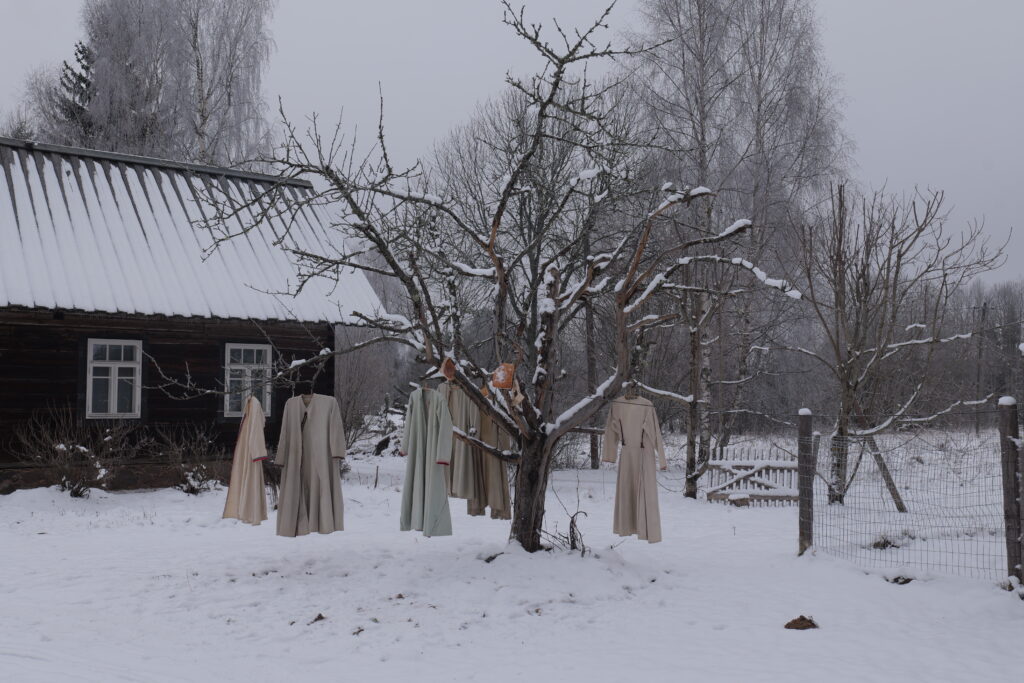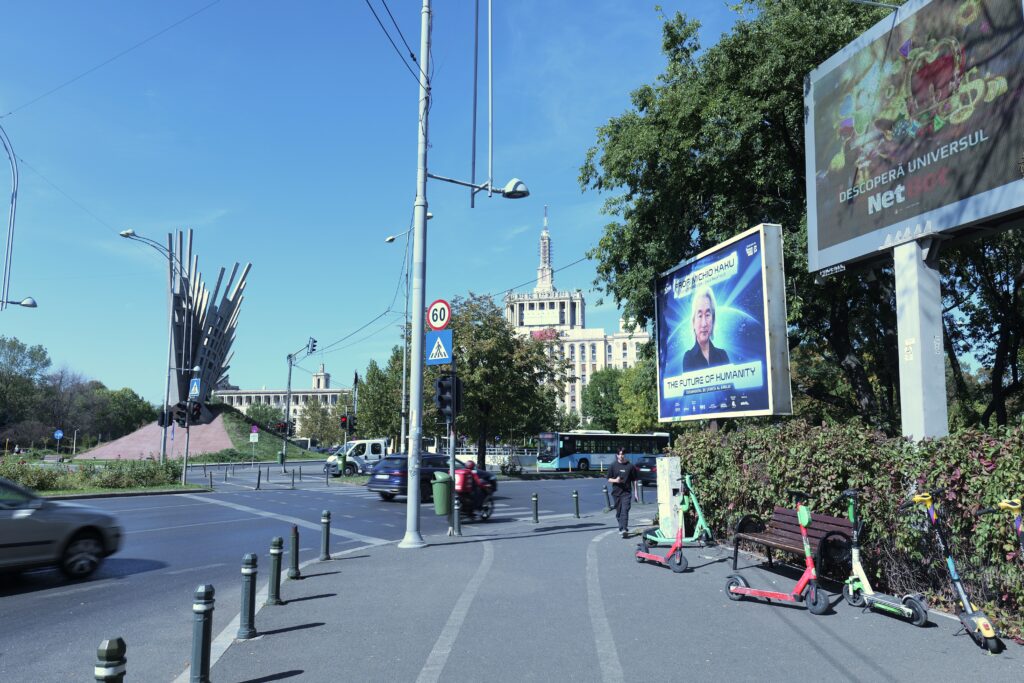Posted by Ruth Maclennan
So close
published on : June 24, 2025First published on September 2021
published on : June 11, 2025

Wedding Feast in Archangel
published on : June 3, 2025The choir meets once or twice a week to sing traditional folk songs from Pinega. They gather in each others’ homes to rehearse and enjoy food and company. Like sisters, like the Crown sisters, they keep each other going and make art together. Some of them are in fact cousins from the same village. They have been on tour to Norway and elsewhere but mostly sing in Archangel. One of them had just got married and invited me to the feast.
I look forward to feasting again (and maybe even singing) with my Crown sisters in the spring.
Na zdorovye!
First published in January 2022
Horizon (Second Lap)
published on : May 26, 2025Horizon – the space between us
I would like to invite you to help create a collective film.
During the Coronavirus pandemic I have felt my horizons simultaneously shrink to the size of my neighbourhood, my home, and expand as my thoughts and dreams are filled with events and places far away.
Forest fires, floods, empty streets, streets full of protests, violence, or celebrations, long, socially-distanced lines at polling stations or banks, an iceberg floating in the Antarctic Ocean, and death, daily – all these scenes have been happening before our eyes. The rifts between people seem especially deep right now. Maybe others share a feeling of shrunken and overstretched horizons.
I would like to create a collective, continuous – potentially infinite – landscape film, inspired by the ‘endless landscape’ card game. I want to see what happens when we follow a horizon line. The horizon needn’t be a distant view of hills or sea, or buildings, or sky – your landscape can be your kitchen shelf, the kerb, a leaf or rock. Your interior or internal landscape is perhaps the nearest to hand, the most vivid, the horizon that holds your attention right now.
First published in November 2021
Hanging Tree, Setomaa
published on : March 31, 2025
800 Metres in Russia
published on : March 2, 2025800 Metres in Russia, 4K video, 1’49”, 2025
Hands and Hope
published on : January 7, 2025
Надiя
Надежда, Надзея, Naděžda, Nada, Nadja…
Hope is a woman’s name. It is a common name shared between Slavic cultures. It is a translation of the Greek name Eλπίς (Elpis) a minor Goddess. Elpis, Hope, was the last thing remaining in Pandora’s box, after she had opened it and released so many ills.
Only Hope was left within her unbreakable house,
she remained under the lip of the jar and did not
fly away. Before [she could], Pandora replaced the
lid of the jar. [translation of Hesiod, Wikipedia entry on Elpis accessed 6th January, 2024]
So Pandora’s curiosity was accursed, and we are lucky enough that hope didn’t escape and remains to comfort people, or was it the opposite and (idle, false) hope was another curse that Pandora’s box kept in check, locked away, hidden.
Are women supposed to carry the weight of hope? Or represent or perform or hold onto, hope? Hope is weightless, unrealistic, unbelievable sometimes. Hopes float and carry you away on a bubble or they are dashed and bring you down to earth. Hopes are heavenly, while troubles are earthly, weighing you down. But hope carries you into the future, buoys you up, moves you on, takes you forward, or at least keeps you afloat. Every child represents hope to her parents, and to others too.
dum spiro spero – while I breathe, I hope. I first saw this motto on a postcard, beneath a gloomy tartan-draped figure representing the clan MacLennan. It conjured a bleak, worthy trudge through life.
Hope is a theological virtue in Christianity along with faith and love, and the cardinal virtues of temperance, justice, prudence, and fortitude.
Hope can feel good. It is life itself, like breathing – a sign of being alive. Breathing and hoping. Suck the air in, feel your rib cage expand and slowly release. Counting breaths to slow down your breathing prises open a sliver of time and space for a bubble of hope, interrupts the racing thoughts and fears. Listen to the air travel through your body, on to somewhere, someone, else. But only if there is air and space to breathe. Rami Abou Jamous claps with his two-year old son when he hears explosions in Gaza, to help him believe they are fireworks. [Read Anne Brunswic’s post, republishing Rami Abou Jamous, ‘J’ai fais mon sourire de clown et ça a marché’, December 10, Crown Letter Week 203]
Hope against fear. Hope against death. Hope is a holding place, held onto with and for love, when you can’t afford rage.
The Hawk and the Tower
published on : November 14, 2024‘The future of humanity’
published on : October 1, 2024
The sculpture, ‘Wings’, commemorates those who died in the anti-Communist resistance in Romania and Bessarabia between 1945 and 1989. It replaces a statue of Lenin. The ‘House of the Free Press’ was the former headquarters of ‘The Spark’ newspaper. This ideological soup of rehashed symbols and random vehicles, cosmic idols and exhaust fumes clogs the senses.
Swallow Summer
published on : July 22, 2024I lay down on the grass to look upwards and caught sight of swallows darting about high up above. They reminded me of all the other swallows I have watched – north, south, east and west. They fly everywhere. I love them.
Flowers over Parliament
published on : June 24, 2024
All the Tears in the Sea
published on : June 4, 2024All the Tears in the Sea, 2’12” excerpt of 35’ film, 2024
Biography
Ruth Maclennan is an artist. She lives in London. Her work includes films, multi-channel moving image installations, photographs, performances, writing and interdisciplinary curatorial projects. Maclennan’s films and photographs explore how the climate emergency has irrevocably transformed ways of seeing and understanding landscape and place – both for their inhabitants, and as representation. Informed by ecological thinking, cross-disciplinary research and fieldwork, her works examine places through the relationships, cultures, geographical conditions, and stories that form them. She exhibits in exhibitions and film festivals in Europe, USA, Australia and Central and East Asia. LUX Artists’ Moving Image distributes her films (https://lux.org.uk/artist/ruth-maclennan).